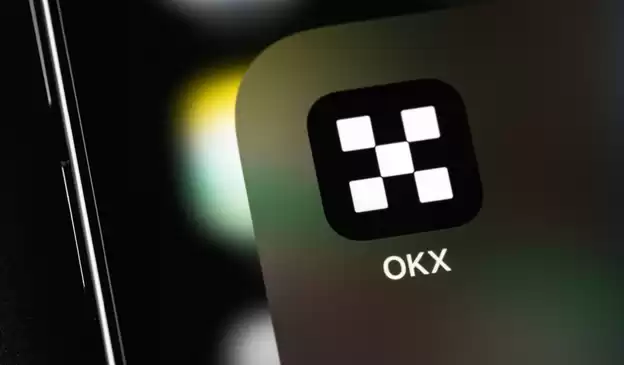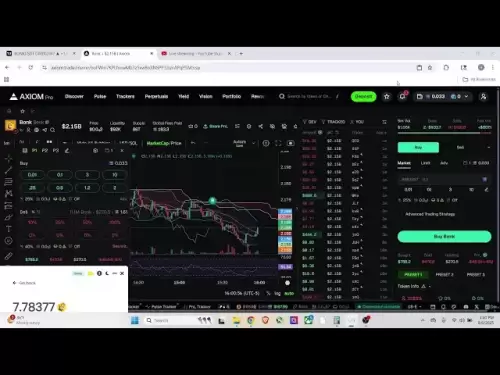-
 Bitcoin
Bitcoin $115100
1.27% -
 Ethereum
Ethereum $3675
2.71% -
 XRP
XRP $2.995
1.45% -
 Tether USDt
Tether USDt $1.000
0.02% -
 BNB
BNB $769.8
2.64% -
 Solana
Solana $168.0
3.25% -
 USDC
USDC $0.9999
-0.01% -
 TRON
TRON $0.3371
1.48% -
 Dogecoin
Dogecoin $0.2051
3.36% -
 Cardano
Cardano $0.7394
2.30% -
 Hyperliquid
Hyperliquid $38.15
0.42% -
 Stellar
Stellar $0.3966
-0.36% -
 Sui
Sui $3.486
2.93% -
 Chainlink
Chainlink $16.72
2.52% -
 Bitcoin Cash
Bitcoin Cash $568.0
4.36% -
 Hedera
Hedera $0.2440
2.59% -
 Ethena USDe
Ethena USDe $1.001
0.04% -
 Avalanche
Avalanche $22.16
2.06% -
 Litecoin
Litecoin $119.1
-0.73% -
 UNUS SED LEO
UNUS SED LEO $8.991
0.04% -
 Toncoin
Toncoin $3.232
-0.39% -
 Shiba Inu
Shiba Inu $0.00001233
2.82% -
 Uniswap
Uniswap $9.717
2.53% -
 Polkadot
Polkadot $3.664
1.85% -
 Dai
Dai $1.000
0.01% -
 Monero
Monero $281.2
-3.89% -
 Bitget Token
Bitget Token $4.350
1.55% -
 Cronos
Cronos $0.1428
5.07% -
 Pepe
Pepe $0.00001050
3.68% -
 Aave
Aave $262.3
3.54%
How to use 20 times leverage on OKX
To leverage the power of 20x trading on OKX, traders must create and fund an account, complete identity verification, select a trading pair, adjust leverage to 20x, and thoroughly grasp margin calculation and risk management.
Nov 11, 2024 at 05:14 am

How to Utilize 20x Leverage Trading on OKX
Introduction
Leverage trading, a powerful tool in the cryptocurrency arena, enables traders to amplify their potential returns by utilizing borrowed capital. OKX, a leading cryptocurrency exchange, provides traders with access to leverage trading, including an impressive 20x leverage option. This in-depth guide will provide a comprehensive walkthrough of harnessing 20x leverage on OKX, empowering you to make informed decisions and maximize your trading outcomes.
Prerequisites
Before embarking on the 20x leverage trading journey on OKX, ensure you have met the following prerequisites:
- Create an OKX Account: Register a trading account on OKX if you haven't already.
- Fund Your Account: Deposit funds into your OKX account to cover your trading activities and potential margin calls.
- Complete Identity Verification: Verify your identity by completing the KYC (Know Your Customer) process. This enhances your account security and enables higher withdrawal limits.
- Choose a Trading Pair: Select a cryptocurrency trading pair that aligns with your trading strategy.
Steps to Enable 20x Leverage on OKX
- Navigate to the Trading Interface: Log in to your OKX account and select 'Trading' from the top menu. Choose the 'Advanced' trading interface for advanced trading options.
- Select Leverage and Margin Mode: Locate the 'Leverage' section in the trading interface and select 'Cross Margin' mode. The 'Cross Margin' mode allows you to utilize funds from your entire account as collateral for leveraged positions.
- Set Leverage: Adjust the leverage slider to '20x.' This will provide you with 1:20 leverage, meaning you can trade with 20 times your account balance.
- Confirm Leverage: Review the selected leverage ratio and click 'Confirm' to activate 20x leverage for your chosen trading pair.
Margin Calculation and Risk Management
- Initial Margin: The initial margin is the minimum amount of funds required to open a leveraged position. This varies depending on the trading pair and market conditions.
- Maintenance Margin: The maintenance margin is the minimum balance that must be maintained in your account to avoid a margin call. If your account balance falls below the maintenance margin, a margin call will be triggered, requiring you to deposit additional funds or close positions.
- Risk Management: Leverage trading involves inherent risk, and it's crucial to manage it effectively. Employ stop-loss orders, position sizing, and profit-taking strategies to mitigate potential losses and protect your capital.
Margin Call and Liquidation
- Margin Call: When your account balance falls below the maintenance margin, you will receive a margin call. This serves as a warning to deposit additional funds or reduce your trading positions.
- Liquidation: If you fail to meet a margin call, the exchange will automatically liquidate your leveraged positions to cover the losses. Liquidation occurs when your account balance is insufficient to maintain your open positions.
Leverage Trading Strategies
- Trend Trading: Identify market trends and trade in the direction of the trend, using leverage to amplify your potential returns.
- Counter-Trend Trading: Take positions against short-term market corrections, using leverage to magnify your profits during market rebounds.
- Range Trading: Exploit market volatility within a defined range, using leverage to enhance your profits from price fluctuations.
- Scalping: Enter and exit positions quickly within short time frames, utilizing leverage to maximize your gains from small price movements.
Leverage Trading Tips
- Start Small: Begin with small leverage ratios until you gain experience and confidence in handling the risks associated with leveraged trading.
- Manage Emotions: Leverage trading can amplify emotions, both positive and negative. Stay disciplined and avoid making decisions based on fear or greed.
- Monitor Your Positions: Regularly monitor your open positions and make adjustments as market conditions change.
- Use Stop-Loss Orders: Implement stop-loss orders to limit potential losses and protect your capital.
- Learn from Experienced Traders: Seek guidance and knowledge from experienced traders to enhance your understanding of leverage trading strategies.
Disclaimer:info@kdj.com
The information provided is not trading advice. kdj.com does not assume any responsibility for any investments made based on the information provided in this article. Cryptocurrencies are highly volatile and it is highly recommended that you invest with caution after thorough research!
If you believe that the content used on this website infringes your copyright, please contact us immediately (info@kdj.com) and we will delete it promptly.
- BlockDAG, Litecoin, and Cardano: Charting the Course in Crypto's Dynamic Waters
- 2025-08-07 09:09:06
- Fireverse Token: Igniting a Musical Revolution in Web3
- 2025-08-07 08:27:45
- Ethereum, L2 Withdrawals, and Decentralization: A New Yorker's Take
- 2025-08-07 08:32:33
- Avalanche vs. Ruvi AI: Daily Sales Tell a Story of Crypto Disruption
- 2025-08-07 06:29:35
- DeSoc: The Crypto to Buy Now for a Decentralized Future (and Maybe 43x Gains!)
- 2025-08-07 06:50:16
- Arctic Pablo Coin: Riding the Meme Coin Wave with a Deflationary Twist
- 2025-08-07 07:18:13
Related knowledge

Why is my Bitstamp futures position being liquidated?
Jul 23,2025 at 11:08am
Understanding Futures Liquidation on BitstampFutures trading on Bitstamp involves borrowing funds to open leveraged positions, which amplifies both po...

How to report Bitstamp futures for taxes?
Jul 30,2025 at 08:35am
Understanding Bitstamp Futures and Taxable EventsWhen trading Bitstamp futures, it’s essential to recognize that these financial instruments are treat...

Does Bitstamp offer inverse contracts?
Jul 23,2025 at 01:28pm
Understanding Inverse Contracts in Cryptocurrency TradingIn the realm of cryptocurrency derivatives, inverse contracts are a specific type of futures ...

What is the difference between futures and perpetuals on Bitstamp?
Jul 27,2025 at 05:08am
Understanding Futures Contracts on BitstampFutures contracts on Bitstamp are financial derivatives that allow traders to speculate on the future price...

How to find your Bitstamp futures trade history?
Jul 23,2025 at 08:07am
Understanding Bitstamp and Futures Trading AvailabilityAs of the current state of Bitstamp’s service offerings, it is critical to clarify that Bitstam...

Can I use a trailing stop on Bitstamp futures?
Jul 23,2025 at 01:42pm
Understanding Trailing Stops in Cryptocurrency TradingA trailing stop is a dynamic type of stop-loss order that adjusts automatically as the price of ...

Why is my Bitstamp futures position being liquidated?
Jul 23,2025 at 11:08am
Understanding Futures Liquidation on BitstampFutures trading on Bitstamp involves borrowing funds to open leveraged positions, which amplifies both po...

How to report Bitstamp futures for taxes?
Jul 30,2025 at 08:35am
Understanding Bitstamp Futures and Taxable EventsWhen trading Bitstamp futures, it’s essential to recognize that these financial instruments are treat...

Does Bitstamp offer inverse contracts?
Jul 23,2025 at 01:28pm
Understanding Inverse Contracts in Cryptocurrency TradingIn the realm of cryptocurrency derivatives, inverse contracts are a specific type of futures ...

What is the difference between futures and perpetuals on Bitstamp?
Jul 27,2025 at 05:08am
Understanding Futures Contracts on BitstampFutures contracts on Bitstamp are financial derivatives that allow traders to speculate on the future price...

How to find your Bitstamp futures trade history?
Jul 23,2025 at 08:07am
Understanding Bitstamp and Futures Trading AvailabilityAs of the current state of Bitstamp’s service offerings, it is critical to clarify that Bitstam...

Can I use a trailing stop on Bitstamp futures?
Jul 23,2025 at 01:42pm
Understanding Trailing Stops in Cryptocurrency TradingA trailing stop is a dynamic type of stop-loss order that adjusts automatically as the price of ...
See all articles

























































































